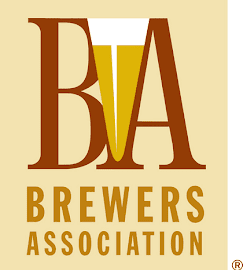When I worked in radio, I was taught to create commercials as thirty second word-pictures, movies for the radio, if you will. Memorable television commercials do the converse, relying on images to tell a story, with the concise use of a few words to reinforce the message.
There's a wonderful television advertisement for Guinness Stout from the mid 1990s that is such a visuals-only creation.
The spot begins with a thirsty man ordering a pint of Guinness Stout, while dancing to the sounds of Perez Prado. (Irish stout and Latin-American big-band jazz: how's that for a cross-cultural melange?)
A publican draws the initial 2/3 of the pour. A burst of nitrogen-injected bubbles cascades upward, like an off-white waterfall defying gravity in a river of inky-black stout ale.
Waiting, the man dances, for it will be 5 minutes before the foam will subside (abbreviated to 60 seconds by the wizardry of video). Only then does the publican pour the remainder of the pint. The meringue of foam bulges ever so slightly above the top of the glass.
The thirsty man ends his dance, and, at long last, exultantly enjoys his pint of stout. Good things come to those who wait.
No dialogue needed. Cribbing from a more recent campaign, it's brilliant!
In a recent piece in the Daily Mail, UK beer writer Pete Brown has an illustrative study of how Guinness continues to market its beer intelligently, creatively, and effectively versus how Stella Artois —an international-style lager (I.L.L.)— has lost its groove.
According to Brown —who was working in the early 1990s for a UK advertising agency that held the Stella Artois account— Stella Artois was achieving 20% growth during the 1980s and 90s. Was Stella really any 'better' than other international-style lagers? Maybe, maybe not. What mattered more was the perception that it was.
The timeless continental neverland in the commercials showed a beer that was expensive not for its own sake but because of its inherent value. Even though Stella was outspent by its rivals, its ads were the most recognised and best-loved of their day.
InBev drastically discounted the price of Stella to supermarkets, effectively undercutting its own message of higher price equaling higher quality. (The ad tagline had been "reassuringly expensive".) Simultaneously, InBev cut the cost of ingredients by changing the recipe. It would be a lethal combination.
After the merger [first as InterBrew with AmBev of South America in 2004, and finally as ABIB after the purchase of Anheuser-Busch in 2008] Inbev instituted an aggressive cost-cutting culture. Out went the lavish TV ad production budgets. In came cheaper, high-visibility posters. Out went the embossed cans; in came a smaller bottle size for supermarket multipacks.
The beer itself, brewed in the traditional style with quality ingredients, had always tasted more full-bodied than its competitors. That put some people off . Inbev started to brew with maize, cheaper than barley, producing a blander-tasting beer. <...>
Sales of Stella went into reverse, with a rumoured annual volume decline of ten to 15 per cent.
Brown also briefly touches upon the question of provenance.
Stella had relied upon the inference that a beer produced in Belgium would be, ipso facto, better than a lager produced in the UK. Then it acquired brewing plants in the UK, and moved some production there. Brown quotes Nick Miller, marketer for SAB/Miller in the UK:
'We're in the "world beer" market - beers that are brewed in their country of origin (the Stella we drink is brewed in Wales) and that off er the consumer something genuinely different.'
Brown counters:
Some of these 'world beer' brands feel like a desperate marketing gimmick. Beers from countries such as Russia, Estonia, Brazil or Peru are sold at a premium to established brands and are considered fashionable simply because they come from somewhere we haven't seen beer from before. But inside the bottle, they can be very average. When they lose their novelty value, what's to stop them disappearing like any other fad?
This is a topic that deserves greater scrutiny. It goes to the questions of freshness, image, and local business support. And as to whether technology can trump taste, and, if so, in what cases (pun intended)? Guinness might be the poster brew-child: the beer is produced in many locations around the world, whereas the marketed identity is defiantly Éireann.
Ah, but we make 'craft' beer, some might say. That's folly. Do you not sell that beer? Read the entire article. It has important lessons for those smaller 'craft' breweries who are becoming regional brands, and those who may only just be beginning to expand their sales markets.
The rise and fall of Britain's favourite beers:
Why brewers are desperate for us to spend £4 on a pint of lager
By Pete Brown
The Daily Mail
11 November 2009
- I was alerted to this story by Jay Brooks at his blog Brookston Beer Bulletin.
- Watch Guinness' brewmaster Fergal Murray demonstrate the "Perfect Pour" here.
- The hilarious dance moves in the ad are in themselves a clever connection with many of us who likewise can't dance.











No comments:
Post a Comment
Comment here ...